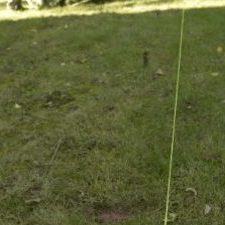No products in the cart.
A chain link fence can be a great addition to any yard, and thanks to it’s low percentage of opacity, it can legally be placed in front yards or corner lots without impairing traffic visibility, in most locations. Have a set plan in mind, and be prepared for a little research to make the process of chain link fence installation go smoothly and stress free.
Chain link may seem like a simple option but there are many variables that can be added to help bring life to it. Consider a coating or enamel, black is the most common, to protect the metal from weathering. The standard metal posts can also be replaced by wood to create a more rustic design.

